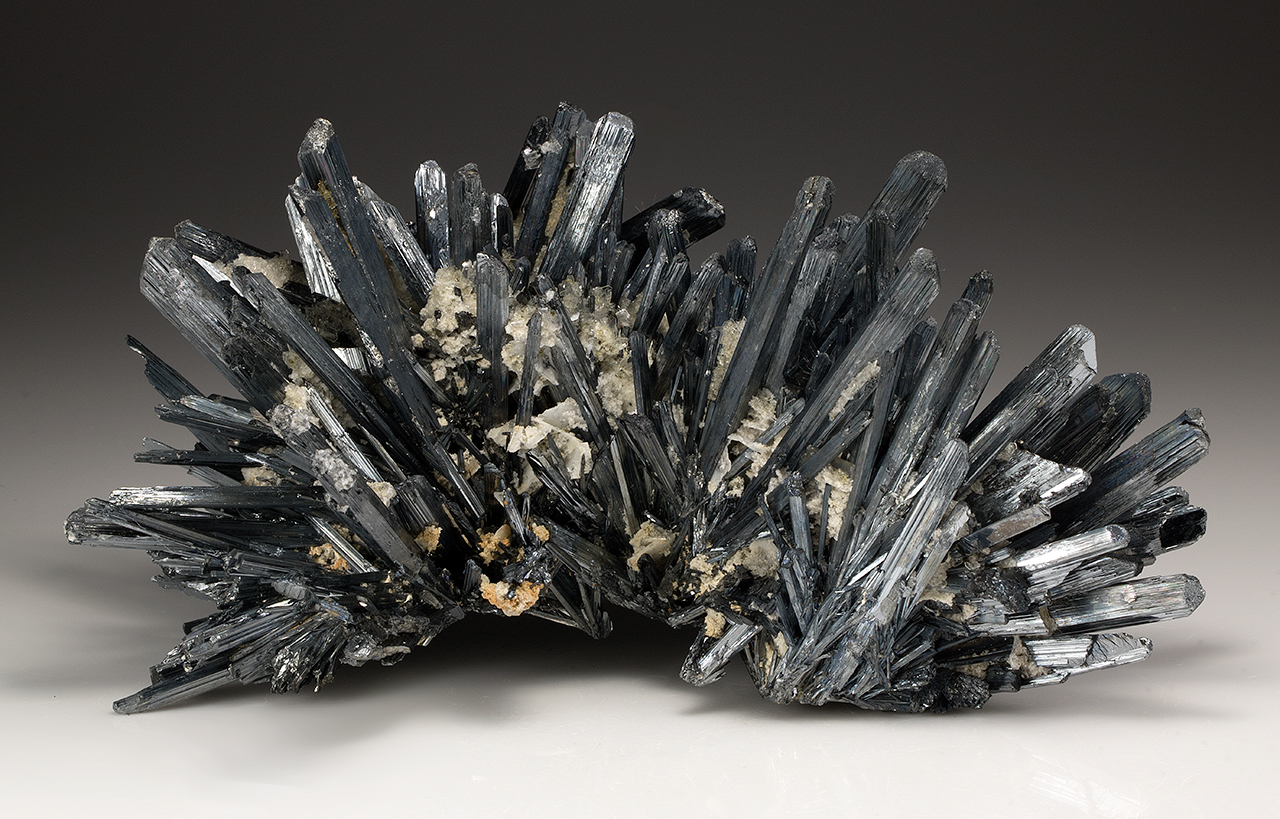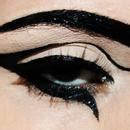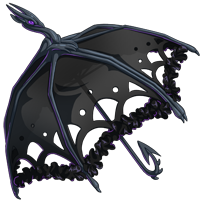

Kohl
(#80511112)
black needle, glittering medicine, apotropaic design
Click or tap to view this dragon in Predict Morphology.
Energy: 48/50

Expand the dragon details section.
Collapse the dragon details section.
Personal Style

Ancient dragons cannot wear apparel.
Skin
Scene

Measurements
Length
5.51 m
Wingspan
6.98 m
Weight
658.31 kg
Genetics
Eldritch
Savannah (Banescale)
Savannah (Banescale)
Eldritch
Mottle (Banescale)
Mottle (Banescale)
Obsidian
Ghost (Banescale)
Ghost (Banescale)
Hatchday
Breed
Eye Type
Level 1 Banescale
EXP: 0 / 245


STR
8
AGI
7
DEF
6
QCK
8
INT
5
VIT
6
MND
5
Biography

 |
Kohl, Stibnite or Antimonite "eye-makeup stone" Chemical Formula: Sb₂S₃ IMA symbol: Sbn Discovery: ~3000 BCE, Egypt (Earliest Known) |
Category: Sulfide Mineral Crystal System: Orthorhombic Crystal Habit: Massive, radiating, elongated, granular Fracture: Subconchoidal Mohs Scale: 2 |
Stibnite has a structure similar to that of arsenic trisulfide, As2S3. The Sb(III) centers, which are pyramidal and three-coordinate, are linked via bent two-coordinate sulfide ions. However, some studies suggest that the actual coordination polyhedra of antimony are SbS7, with (3+4) coordination at the M1 site and (5+2) at the M2 site. Some of the secondary bonds impart cohesion and are connected with packing. Stibnite is grey when fresh, but can turn superficially black due to oxidation in air.
Stibnite occurs in hydrothermal deposits and is associated with realgar, orpiment, cinnabar, galena, pyrite, marcasite, arsenopyrite, cervantite, stibiconite, calcite, ankerite, barite and chalcedony. Small deposits of stibnite are common, but large deposits are rare. It occurs in Canada, Mexico, Peru, Japan, China, Germany, Romania, Italy, France, England, Algeria, Borneo, and the United States.
Stibnite was used ever since proto-dynastic Ancient Egypt, c. 3000 BCE, as a a cosmetic and medication around the Mediterranean and farther afield. Pastes of Sb₂S₃ powder in fat or in other materials are called kohl, and are used to darken the brows and lashes, or to draw lines on the skin and around the perimeter of the eye. In Ancient Egypt, all social classes originally wore kohl as protection against eye ailments. There was also a belief that darkening around the eyes would protect one from the harsh rays of the sun. The term kohl was not limited to cosmetics made from stibnite, also including galena (lead) and Malachite eye-paints. The 18th Dynasty Pharaoh Hatshepsut would also grind charred frankincense into kohl eyeliner. Cosmetic ingredients such as cinnamon bark and other spice components – used for fragrances – alongside copper kohl sticks were exported from Tamraparni (ancient Sri Lanka) to Egypt. Two of kohl's lead compounds – the lead chlorides laurionite and phosgenite – were not natural to the Nile valley. It is believed they were intentionally synthesized by the ancient Egyptians for this purpose.
Concerns have more recently been raised about the contents of kohl and thei effects on health, especially for kohl made with lead. Eye cosmetics are one of the leading sources of lead exposure in the Middle East and South Asia. However, a study in 2010 reported that the particular heavy eye makeup that ancient Egyptians wore may have had medical benefits. At submicromolar concentrations, the specially made lead compounds can elicit overproduction of nitric oxide (NO), which in turn can trigger an enhancement of the immune response. The ancient Egyptians, documented in the Ebers Papyrus (c. 1550 BCE), discuss these compounds within kohl as protective for the eyes, used as both medicine and cosmetic. There are a number of endemic ocular diseases in the Nile region that may cause visual loss, to which kohl was prescribed as a preventative. Its widespread use across the Mediterranean and the Middle East attests to its effectiveness and ability to protect the eye from infectious disease, in addition to being used as a cosmetic.
Kohl is still widely used around the world as eyeliner to contour and/or darken the eyelids and as mascara for the eyelashes. The exact content of kohl and various ways to prepare and apply it differ based on cultural tradition and country. Usage of kohl eye paint in the Horn of Africa dates to the ancient Kingdom of Punt. Women applied kohl for cosmetic purposes, as well as to cleanse the eyes, lengthen eyelashes, and to protect the eyes from the sun's rays. In West Africa kohl is used by both sexes, and by people of all ages, mainly during weddings, festivals, and congregational. For women, kohl or black-henna is applied to the face as well in a similar manner as that practised by communities in North Africa.
In the some regions of Africa and the Middle East kohl is used to decorate the face with social and cultural signifiers. This tradition originated in the Arabian Peninsula before dispersing. This is employed mostly by women but also by some men and children. In Yemen, mothers would apply kohl to their infants' eyes soon after birth. Some did this to "strengthen the child's eyes", and others believed it could avert the evil eye. In Islam, Muhammad was said to have used kohl, and it continues to be used by many Muslim men today during Ramadan as a sign of devotion. The Sunan Abi Dawood (d.889 CE) reports on the medicinal qualities, writing “prophet Muhammad said: 'Among the best types of collyrium is antimony (stibinite) for it clears the vision and makes the hair sprout.'”
Kohl is known by various names in South Asian languages. In India, it is commonly used by women as a type of eyeliner that is put around the edge of the eyes. In many parts of India, but especially in Southern India, women of the household prepare the kajal (kohl). This homemade kajal is used even for women as well as infants. Local tradition considers it to be medicinal as well as cosmetic, being a very good coolant for the eyes, protecting them from the sun. Some Indian Ayurvedic herbal medicine manufacturing companies add camphor and other medicinal herbs that are beneficial for eyes in their kajal. In the centuries-old Indian Bharatanatyam and Odissi dances, the dancers apply heavy kohl to their eyes so as to draw attention to their eye gestures and movement. The kohl is then applied to eyebrows and eyelids to add further enhancement to the dancers.
In Punjabi culture, surma (kohl) is a traditional ceremonial dye, which predominantly men of the Punjab wear around their eyes on special social or religious occasions. It is usually applied by the wife or the mother of the person. Some women also add a dot of kajal on the left side of the foreheads or on the waterline of the eye of women and children to ward off the buri nazar ('bad glance'), comparable to the evil eye, although it can be interpreted as ill-wishes or sexual harassment. It signifies that the person is not perfect, with them having 'black mark', and hence, people wouldn't be jealous of their beauty.
Aside from cosmetics, stibnite (antimony trisulfide) finds use in pyrotechnic compositions, namely in the glitter and fountain mixture fireworks. Needle-like crystals, "Chinese Needle", are used in glitter compositions and white pyrotechnic stars. The "Dark Pyro" version is used in flash powders to increase their sensitivity and sharpen their report. It is also a component of modern safety matches. It was formerly used in flash compositions, but its use was abandoned due to toxicity and sensitivity to static electricity.
The 17th century alchemist Eirenaeus Philalethes, also known as George Starkey, describes stibnite in his alchemical commentary, using stibnite as a precursor to philosophical Mercury, which was itself a hypothetical precursor to the Philosopher's stone.
Click or tap a food type to individually feed this dragon only. The other dragons in your lair will not have their energy replenished.
Feed this dragon Insects.
Feed this dragon Meat.
Feed this dragon Seafood.
This dragon doesn't eat Plants.
Exalting Kohl to the service of the Lightweaver will remove them from your lair forever. They will leave behind a small sum of riches that they have accumulated. This action is irreversible.
Do you wish to continue?
- Names must be longer than 2 characters.
- Names must be no longer than 16 characters.
- Names can only contain letters.
- Names must be no longer than 16 characters.
- Names can only contain letters.














